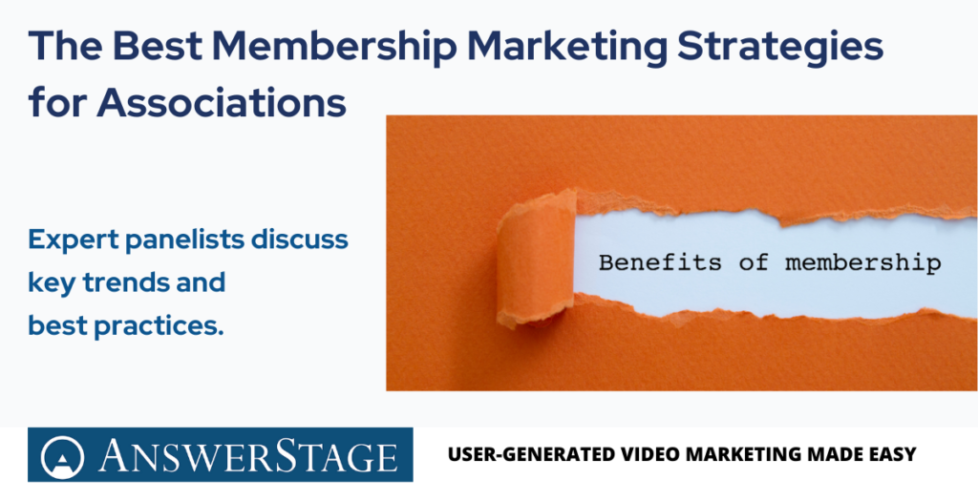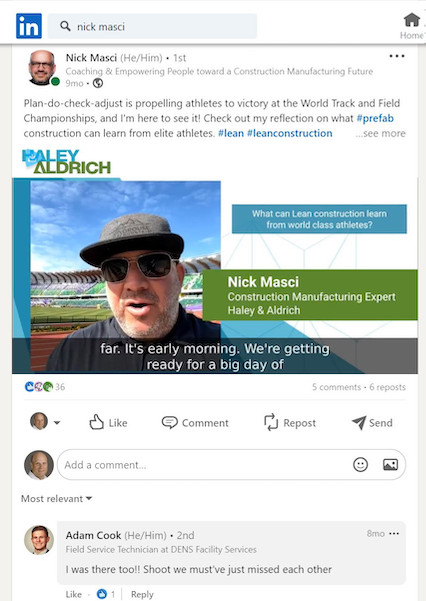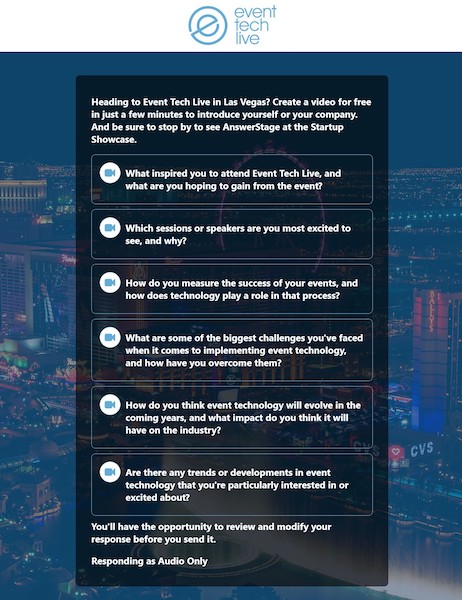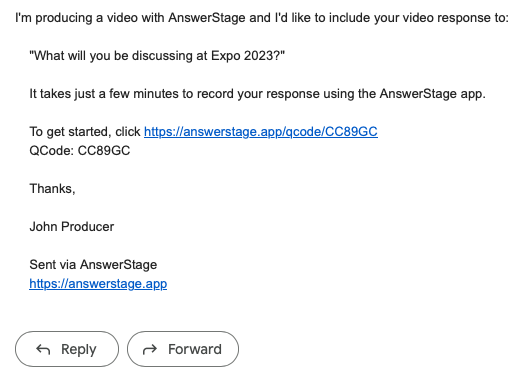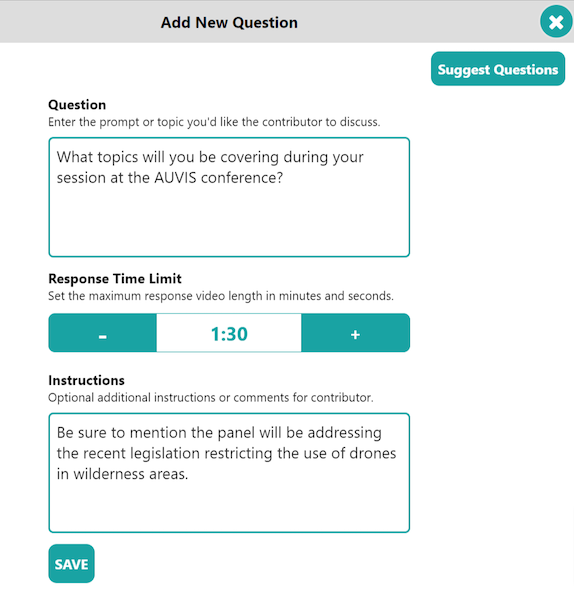The Best Membership Marketing Strategies for Associations
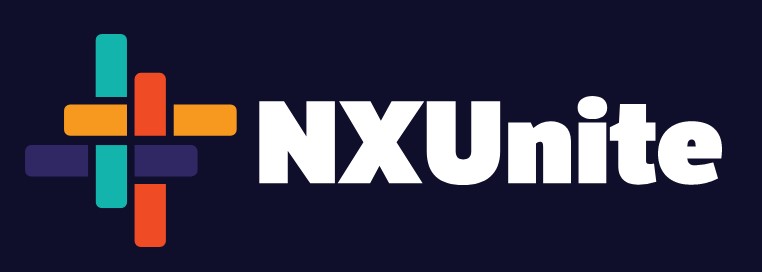 NXUnite Expert Panel:
NXUnite Expert Panel:
This session was hosted by Colleen Carroll of NXUnite and includes Murad Bushnaq, Founder and CEO of Morweb, Jim Wacksman, Producer and CEO of Association Studios, Ashish Malik, CEO of 108 Ideaspace and Rusty Williams, Co-Founder of AnswerStage.
Summary: The panel reviews key trends and emphasizes the importance of identifying the right types of technology that is most beneficial for an association’s needs and budget. Recommendations include: using social media automation, email marketing, and featuring easy-to-digest visual content. They also stress the importance of trying out different technology solutions with a free trial and documenting processes . Overall, the panelists agree that technology should be integrated into all aspects of an association’s operations and that there are tools available for everything, but caution that too many options can lead to decision paralysis. They suggest seeking out peer advice from other associations and using tech experts or consultants when needed.
Video Excerpt
NXUnite Panel: Branding and Membership Marketing Strategies for Your Association
Transcript:
 Colleen Carroll
Colleen Carroll
Q: How do best practices related to branding and membership marketing for associations different today in comparison to five years ago. What trends have emerged in the past few years and months that we need to be aware of?
 Murad Bushnaq
Murad Bushnaq
Great. Well, good to be here. Yeah, I think what we’ve noticed is that, you know, associations heavily depend on their websites, you know, to manage, attract, communicate with their members. And what we’ve seen is that the visual brand of the website has no has not always been a top priority. You know, we’ve met with many associations prioritizing other aspects of their website and using like various AIMS systems, you know, that often provide a boiler template where there isn’t a lot of customizations, you know, to apply that brand effectively throughout their website.
And I feel like now in the last 12 months that a feel I have seen and we’re getting this request quite a bit, is that associations are putting more effort or refreshing their brand along with their website, and they’re making that more of a top priority because they really want to communicate to their members that, you know, they’re reinventing themselves, they’re getting with the ages, they’re innovating, they’re doing all these kind of things.
So what we’ve seen is that, you know, as they’re doing the website, they’re also kind of holistically redoing their brand, updating their marketing collateral, you know, updating the brand guidelines and then applying that, you know, through print and digital collateral. And I think that’s a really great approach because I think members thrive off this kind of positive environment, which is associations, right?
It’s a community of like minded people. So I think having a fresh brand, they can kind of say, yes, I’m associated with that is this is really important. And that trickles down to to everything that they do.
 Jim Wacksman
Jim Wacksman
Yeah, I think everything that Mira had said makes a lot of sense with what we see. But when I was listening to the question, I’m going to take a a different approach with this. And and that is to say that I just think more than ever things ought to be best practices, not change. So instead, like I do agree with everything, but I’m really looking at quality content.
It’s the same stuff that Google trained us all to do some 20 years ago, that it really is about quality content and user experiences. And so that’s a different answer at best to the question, because it’s not. Here’s what’s new, but instead is to say, let’s focus on the basics of really great content quality, high quality content, and then user experiences.
 Ashish Malik
Ashish Malik
Sure, Colleen. You know, thanks again for having me here. And Murad and Jim, I concur with what you have said. I think website, you know, has been really important, not just now, you know, over the last number of decades. And it’s always the extension of a lot of best practices in the industry. You know, we have the first website we did was back in the nineties and we see, you know, how the world is the world around us.
You know, with 2000 introduction of social media and then everybody wants connection to social media in the last decade or so. You know, it’s about systems integration, connecting websites with other websites and so on. If I was to, you know, think about some of the trends and everybody that’s been through the last couple of years of pandemic and how it is fast forward forward it literally the movement into, you know, thinking about more strategies for digital platforms.
You know, these are some of the other trends which I see is impacting the branding world in the marketing world today is, you know, the shift in the member behavior and expectations as well. You know, we live in a world of instant gratification. You know, think about, you know, Amazon is able to serve your audience before you can go and grab it from a store.
You know, Netflix give you all the movies on demand. So I think there’s a huge shift in memory expectations. We understand associations are nonprofits. However, the level of service the members are expecting is is is rock solid. You know, compared to, you know, where you see some of the enterprises of the world. To Jim’s point, I think the whole idea of creating quality content, I think we live in an age of information overload where, you know, everybody is bombarded with so many messages.
While I think association people can find content everywhere, I think association, not just by virtue of who they are, I think they are in a space where they can create that differentiation and and become the trusted source of information from members and that is where I think the strong brand presence is going to make a difference. You know, having a strong website, which is easy to navigate, great user experience and then having different systems, which can help you connect with members one on one versus being all things to all of you.
There are several other trends I’m thinking about. You know, how the importance of data has changed over the last five years. You know, yes, we were still gathering the data in the last five years, but it’s become even more important today. And lately, you know, the trends like the emerging technologies, like artificial intelligence, you know, staying on top of that is so important for associations who, you know, in our experience, you know, sometimes we have seen there’s a resistance to change.
And and, you know, the adoption of these technologies may not be that fast.
 Rusty Williams
Rusty Williams
Yeah, but I have to point out I’m a little bit different. I wasn’t working with associations five years ago. I was working with companies and entertainment entities to help them create a fan base and a community. And that trend of what, you know, shows Major League Baseball, NASCAR, all people we worked with where they’re trying to get people to be really engaged and really interested in what their in their sport and their entertainment, I think is a is a lesson for what’s happening now that the connecting of people to people and making them feel like they’re part of something and become really fans.
I mean, there’s a marketer here in the Boston area who wrote a book called Fan Ocracy, and it really is kind of an interesting way of looking at it that instead of just branding through traditional means, you’re branding through your members and through their connection with each other. So again, I can’t speak to how much of that was there five years ago, but I can speak to that feels like what people are asking for now.

Q: I think we all recognize that association professionals are busy. It comes up on every panel that I am on what small change could associations make today that could potentially have a really big impact on their brand and marketing?
 Ashish Malik
Ashish Malik
So I think that’s a really great question because I’m a firm believer that, you know, small changes can make can lead to a bigger impact. And and I think if I was to think about number one problem for the associations and association professionals, I think it’s about being tight on resources. You know, they are asked to do a world you know staff members typically have to do a lot of stuff and they have to wear multiple different hats.
So, you know, but but, you know, if I was to think about, you know, over the last, you know, how things have changed over the last ten, 20 years, you know, one thing that we have always lean on, you know, whenever we want to manufacture more time in our day job is to automate and finding the opportunities for automate.
So if we think about, you know, what that small change could be, you know, I would say it’s about finding those opportunities for automation within your organization that in your day job, for example, you know, if if you are from the professional education, continuing education background, I think the whole idea of, you know, how do you bring automation in your processes from a membership marketing lead gen standpoint, it’s about, you know, how do you educate your prospective members even before they speak to you?
Some of these automations, you know, takes about it literally takes about 8 to 10 hours to implement, but it can actually give back about hundreds and hundreds of hours back into the day jobs. Some something else that I recognized over the last number of years is member renewals. You know, it takes a lot of time for associations. And, you know, it’s about figuring out the opportunities on how we can, you know, improve the experiences.
And as my marketing prof used to say, you know, marketing is not just about, you know, sales and, you know, spreading your word out. There’s also equally about the service because that’s where, you know, you can impact the word of mouth. You know, members bring other members in and so on. So I think if if one small change solution can do, if they can find out those opportunities to automate and start moving towards that, I think that will make a big impact in the long run.
 Rusty Williams
Rusty Williams
Yeah, I think that’s what Ashish was just saying. I think, you know really that mantra, how can we automate, automate, automate, automate, what are we doing that’s manual that we can make a less manual and scale in a way that takes advantage of the types of technologies that are out there. So really good example that Ashish brought up is, you know, some of the things that are coming out with a AI.
So there are things that can help you, right? They can help you communicate that can help you actually even do some assessment of, of what your member retention efforts are. So automation is the key. We think about that from our perspective. We’re in this in the video production process. How can we make it so that you can easily collect content from your from your your members, have them speak on your behalf, and then automatically push that back out with branding and have that be a a scalable process that doesn’t take a staff of people to do all that editing and production.
So it’s, you know, that’s kind of ingrained in our our, our tech technology background. But I think is, you know, you don’t have to be technologist to just sort of look at what tools are out there to say, how can we how can we make this process more efficient?

Yeah, I think to two simple things that you can do, which won’t cost you any money and they can do internally is one, I would say review your current website architecture. So the site architecture essentially means is that how your website is laid out? So the navigation, all the pages, everything on your website essentially. And what you want to do is you want to map out your current site architecture, okay?
And then you want to see where you can trim the fat, remove any unused pages, merge pages that are maybe similar, simplify your, your main navigation, things like that. If you just do like a general content strategy and by reviewing your site texture, I think it’s going to have a big impact on your website. And basically, just like the communication of your websites, I think that’s like a really simple and easy way to do that will cost you anything.
Generally, you should probably be doing this every 12 months. It’s really easy to get more and more content on your website and then before you know it, like people can’t find anything. So it’s really important to kind of trim that down. Another easy one I think would be good is just to clean your data, right? This means going through your member contact’s email lists.
You know any other data sources to trim any dead weight? You know, by doing so, you’ll benefit from a more engage audience that is more likely to respond positively to marketing messages. And additionally, clean data will provide you with more accurate analytics. Right? And then as you have more accurate analytics, you can optimize your membership marketing even further and further.
The last thing is that, like I said before, like, you know, if you’re looking for to make a splash and kind of tell your audience that, you know, you’re up in your game, refresh your brand, you know, and it doesn’t have to be like a do it all at one time. Like, you know, start with a logo, start with your email marketing, start with the social media profiles.
You know, these are the touch points where your your members are most engaged with and just start there and then trickle down to, you know, you know, the stuff that costs a little more like your tradeshow booth or your, you know, your event stuff and your print collateral and things like that. But I think those are three, you know, you know, good ways to, you know, make impact without having to spend too much.
 Jim Wacksman
Jim Wacksman
Yes, absolutely. But first, I want to give a shout out to Rusty, who is participating on this panel and typing in answers to questions in the chat at the same time. I wouldn’t dare. Well done, Rusty. Well done. Sure. So I can give some early examples here that with with our association customers and that is things that are repetitive, like whether it be new onboarding, new members.
And we have a project right now with a large association who is creating a series of videos to onboard new employees. So trying to take things that that are that are essentially frequently asked questions and turn that into something. Video is a great vehicle, by the way, for that. But so that you’re you’re consistent with your message. You don’t have to put the time into reinventing that every single time, but you have it.
And so any any yes to automation of course, but look at repetitive task and see what you can create to help that.
 Colleen Carroll
Colleen Carroll
Q: I’m going to have Jim, you start us off with our next question for our associations that are ready to lean into innovation and make those big upgrades, what advice do you have and where do you suggest that they direct their energy?

Oh, yes, that’s an exciting one and it’s already been touched on a little bit so far during this discussion, but definitely language model A I, the Chat Gap T and Jasper and things like that out there. If anybody hasn’t seen that, it is truly mind blowing what is coming what’s really already here with that at at association studio.
So it wouldn’t be a surprise to anybody that that script writing you know we have script writers on our team and that is a part of the process and that can add seven days, maybe longer to any project lifecycle. And so to be able to use something like like a chat T and truly expedite that, I mean, down to less than an hour, what would take so much longer is absolutely fascinating.
It’s a true game changer and I think it’s going to get a lot better during 2023. It’s already just fantasy tastic and it will be interesting to see which associations really hop on that and start to figure out how to build better experiences for their members in industry through this language model.

Sure, absolutely. And I’m going to take a slightly different approach to this question, you know, because one of the things we have realized working with associations of different sizes, you know, there’s almost like a continuum of maturity when it comes to different functions in the organization, whether you think about the membership marketing, whether you think about the I.T or, you know, member benefits and so on.
And I think to identify the opportunities for innovation and upgrades, I think it’s important to take a step back and see, you know, where you are in that continuum because you know what may be true for one association may not be true for another. And I think it’s also about going back to the drawing board and say, you know what, why do we exist?
You know, well, you know, who are our members? You know, what are their needs? And not just that, you know, how the needs of your of your members are changing. And I’m going to bring in Chad DPD again. And we know that, you know, while, you know, part of the population is worried about losing their jobs because of these kind of innovation, the other part is, you know, looking at this as an opportunity.
So and this these same technology disruptions are impacting the members as well. So if I’m an association, I would be thinking about, you know, what, like what’s the next big thing that is going to disrupt my members and how can I help solve that problem? And the question of, you know, because problem equals opportunity. And I think my idea is, you know, if we can pinpoint on those problems, I think finding solutions won’t be too difficult.
And I think the whole idea of staying relevant to the needs of members I think is the most important thing. This is where I think if associations direct their energy, they can actually figure out, you know, what those innovations might look like.

Yeah, I mean, I think I think you need to be really clear on your goals, right? Like, what is the main goal for your organization this year? What are secondary goals? Right. Like really define what that is. You know, some associations are looking to increase memberships, other ones are looking to bring value to their members. You know, I think based on your goals and based on what actually members care about what’s valuable to them, I think you should then lean into whatever solution will bring you the most.
You know, our what are the things that, you know, clients that associations do is obviously the read through their websites and you know that’s that’s a huge and maybe that’s a big spend and that’s, you know timely and all that kind of stuff. And maybe you don’t need to do that right off the bat, right? If you do, great.
Then really kind of, you know, nail down your your goals and your user needs and focus to that. But maybe it’s, you know, an LMS system. Maybe it’s, you know, creating a more engaged online community where, you know, members can talk to each other, right? Maybe it’s video courses, right? Like if you’re trying to increase revenue, you know, you should look at it more as a corporation, right?
Like, okay, well, how can I bring this much more revenue? You could look at it that way and then just approach it in that angle. But I think it’s really important to define what your goals are, not just your goal, but secondary goals and whatever kind of low hanging fruit is available to you. You know, put your energy into that and then, of course, you know, go down that list until you get more and more and, you know, your website or your association is more effective.
I also feel like it’s really important to really measure everything that you do. And so as you’re applying all these new type of things, you know, what is what are some KPIs that are really, you know, that you can kind of set before you do this that says, yes, this is successful. A lot of times people, you know, just throw this kind of stuff to the wall of something stick.
But if you have a clear KPI before you do that, then then I think you’re going to be in a much better place to know if it actually worked or not.

Yeah, well, I guess my first comment is the name of this panel I think is pretty pretty well well framed. And that is by association that an association by definition is a collection of people who should feel good being together and B, should feel good being part of that. So, you know, to me that’s like the top level goal.
How can we make our members feel like they belong and feel like they’re really excited to be affiliated associated with this association? So, you know, that’s the feeling. And I think that you can get into a bit of a rabbit hole of all sorts of different technologies and techniques, and that can be a bit overwhelming. But if you kind of keep that feeling as the primary goal, that I think will help guide you as to what tools would be helpful.
Meanwhile, there’s some conversation going on in the sidebar here and Jim and Association others have brought up Chat GPT and some of these things that are emerging as tools. And one person was asked, you know, doesn’t that can you detect that it’s kind of a less human or less authentic way of connecting? And my answer to that, don’t think of it is as, you know, something you just feed something into and then automatically gets sent out to people.
It helps you as almost like a first draft or a first, you know, first take, and it gives you guidance as to what will be useful. So don’t think of it as something that you’re you’re just feeding and then reconnecting to your members. It just gives you a dashboard that you can add it, you can refine and then help people feel like this is the place for me.
So I guess that that’s all I would say is look for the look for those tools that give you that feeling.
 Colleen Carroll
Colleen Carroll
Q: Every association is different. How can our associations align their membership marketing practices with the needs and or wants of their current and prospective members?

I think I probably would repeat much of what I just said, that every association is different, you know? And so the key is to as to make the people that you have part of your association feel like they belong. And, you know, we work with a variety different associations. Some are for security professionals, others are for dentists and others are for, you know, for restaurant owners.
Obviously, you know, if you’re a dentist, you have nothing to do with a restaurant owner. But if you’re restaurant owner, you know that that’s that’s where people have the same problems with you, the same business goals. So it’s really it’s all about finding those people with those common interests and reinforcing what those interests are and what their problems are, and then helping them solve those problems because, I don’t know, was the Mirage who said, you know, a problem is an opportunity.
And that really is true for an association. What can we do to help the people who belong to our association solve the problems that they’re seeing day to day, whether they be a security professional, a restaurant or or a, you know, a you know, any any type of association.

You know, I think this is kind of obvious, but again, to say the obvious is have regular meetings about your membership marketing. You know, I think it’s I talked to a lot of associations and they’re like, you know, we don’t do this very often. You know, like we get together every few months or once a year and that kind of stuff.
And, you know, the best ideas are going to come with, you know, communicating with each other, share, you know, giving your giving your opinions of what works and what doesn’t. Right. And if you have regular meetings, you know, you’re going to get a lot of this stuff out. I think also getting meetings with your members, you know, doing a survey, getting people in a webinar on a you know, a Zoom call or something like that, and really kind of find out what’s valuable to them right?
You know, they’re paying their their fees every year and you want to make sure that they’re getting more than their value, right? Like, it shouldn’t be like, yeah, I could go either way. That’s a problem, right? Like, they should be like, Wow, you know, I love being part of this. I’m proud to say that I’m part of the substantiation.
And if they don’t, you know, you should find out why. And what you’ll want to try to find is that person that is really frustrated, that can’t just wait to kind of blab for for a good 20, 30 minutes and just tell you how frustrated they are. Usually those people are the ones that your biggest advocates, right? You just got to turn them.
So but also by them kind of venting on you, it’s actually good because you’re you’re finding out exactly what maybe some of the other not so nice people want to tell you. Right. And then from there you get all this amazing feedback and then you bring it into the marketing meetings. Right. And I would also say that, you know, I head of these marketing because I would do monthly and I would have some kind of agenda of what you’re going to be discussing.
And then out of that agenda they’re going to be discussing, there’ll be certain tasks that you should, you know, deliver it to everybody else. So that way, in the next marketing meeting, you’re also having that conversation again and actually checking off certain things. And you know, with all of that at the end of the year, right, you’ll be like, Wow, look at all the stuff that we achieved.
And if you’re not having those regular meetings. You’re just not is not going to get there. So arrive at the best ideas together and have regular meetings. It’s just a really simple way to kind of get ahead of it.

Yes, But if I may, real quick, just want to follow up on Rusty’s last comment to the previous question about the chat gap stuff. And Hugh, of course, was replying to somebody in the in the questions in that chat, and that’s absolutely correct. And that this is not just something that you plug in and then walk away from.
You definitely go back it it saves you from staring at a blank screen and going, what do I type or what do I you know, it just speeds that part up. You’re going to go in. We’re not we’re not trying to, you know, just automate something and walk away from it. It just helps tremendously. So I just wanted to throw that part in there
So back back to this question. The challenge and opportunity is going back to personalized experiences, and that has become just an expectation. And you see that everywhere, not not just in the nonprofit world. You see that in and network television and kind of the directions the shows go in and how now the big demand is for streaming and you can get really niche audiences and things.
You see that played out in social media where certain demographics of people will gravitate towards one platform and then start to shift away to another platform. And, you know, I I’m not even going to try to talk like I’m just done like I got as far as LinkedIn, I’m out, you know. So it’s really it is challenging. It is It is challenging, but there’s tremendous opportunity, as it’s been mentioned before, is really trying to trying to segment like it’s it’s really not just enough that we’re all in one industry.
If that were in different places in our careers in that industry. A lot of the association folks that I speak to, they’ve been coming for so long, they watched their kids grow up together like that’s what they get out of it. But that’s really different from the recent graduate who is just starting off in the industry looking to network and make connections.
You know, that conference or convention is not necessarily a vacation. They’re hungry. They’re trying to network and meet and meet people for their career. And then, of course, that’s just scratching the surface for the many different ways you can segment an audience. So, yeah, there’s personalized expectations. There are going to be key, definitely.

And just out, you know, was thinking one of the comment from Warren about the, you know, marketing meetings and how we can gather feedback from members that as I’m a big advocate of, you know, knowing what problems are resolving and I totally agree. I think that sort of it approach definitely helps. Now, one of the things we often see is association conduct member surveys.
One of the downsides of these surveys is, you know, services tend to get dated. You know, as soon as, you know, you conduct it today and then in a few years time, two years time, and sometimes it could be a huge cost to actually go back and do it again yet again. So one of the things that we did for some of our clients, as you know, think about all the entry points and all the touchpoints with members and say, you know, how can we gather some insights at every touchpoint?
Like, for example, when they’re signing up for your events? Can we ask them a couple of more questions and uncover some of their interest or so like why are they attending this event? You know, what is bringing them here? What are they going to take away, you know, when they sign up for a newsletter you know, of? Now we create content on so many different things.
What would you like to hear more often, you know, after they are 90 days into the membership, ask them, you know, can we do something for you? You know, how are you using our benefits and so on. So this short one question, two question service can actually over time give you a wealth of information to make some of those decisions in your marketing meeting and say midcourse correction optimization off of these touchpoints for organizations who may be like I talked about that continuum.
And if organizations are like we say, they’re just starting out with some of this stuff, becoming more strategic about, you know, using the digital channels and website and so on. I think if you haven’t done yet, you know, invest in building those member personas, understanding, you know, who are we talking to? You know, how will we segment these members.
What do they look like, what are the characteristics, goals and what are their unique needs that we can address? And I think if if we have that basic work done, you know, there’s no reason why you can’t really align your more your activities and initiatives to the needs of your members.
 Colleen Carroll
Colleen Carroll
Q: Can technology help associations with their branding and marketing? And if so, how can associations identify what types of tech may be most beneficial to them?

Yeah, you know, tech is going to help you tremendously. So, you know, some people feel like especially for small or medium associations, you know, they feel they can’t afford it or, you know, that they’re they’re the solutions are too expensive, too heavy lifting and things like that. You just got to dig a little bit more. There are tons of solutions out there at a very low price point and really just kind of prioritize, you know, like maybe there’s ten things that you wish you had some day, you know, just for the three most effective ones.
Right. And find that solution. That’s that’s right for your budget. There are tons of solutions out there. So I would say, yeah, definitely use tech. I mean, I think social media is an easy one to automate, right? You know, get in those 510 messages ahead of time. Let the system kind of push those out. Let the system get the analytics back to you.
You know, when sending out mass emails, you know, make them as visual as possible. Have some analytics based on that. Right. Send them out regularly. Get those five or ten emails out there ahead of time. Right. Schedule them ahead of time. I think overall and there’s software that do all these kind of things in regards to your website and actually anything, make sure it’s non-technical.
All right. If you have to like crop images, if you have to add code or worry about plug ins or think about security maintenance or stuff that’s too hard, especially for associations that don’t have a dedicated I.T department or a marketing department, things like that. Right? Like they need to be able to do it themselves. And when you get on to one of these platforms, make sure that you do the free trial, go through it quite a bit, you know, and then get somebody else to go through it quite a bit.
Right? And then if you actually do decide to buy and go with one of these things, create some consist, some some video, some documentation, have a bit of governance and all the software that you use, you know, more often than not plan for like you know the the the person that was managing the website left and now the website stagnant for three months.
Right so avoid those kind of things you associations to have turnover volunteers come and go and stuff like that. It’s really hard to document everything and yeah just if there’s tons of tech out there that you should be using and go go hunt for, it is definitely everything for every budget and tastic.

Absolutely. And I wish I could put that in more of a soundbite form for you. But tech is just everywhere. I mean, it’s probably in all of our light bulbs at this point, and it’s certainly all over marketing and things like that. Gosh, just even touch on it for for a second. You know, things like what Rusty is doing with his company that make it so easy for members to just have their voice be a part of and get those peer to peer endorsements and testimonials.
I mean, it just goes on and on. There’s so much technology really should be helping out. I mean, it really it’s an expectation at this point and it should be an anything and everything that an association touches and what they do.

Sure, Colleen. You know, you asked for a sound bite. I wanted to share, you know, while I was preparing for this, this panel, I was thinking about, you know, marketing and reality should be called marketing today because, you know, it’s so much about tech and in this kind of, you know, totally conquers with the discussion. Something else that I’m also thinking about is, you know, we live in a world where there’s tools for everything.
You know, what we talked about member personas and things like that. You know, I don’t know if you’ve seen the are based tools who can actually build your personas, looking at your Google Analytics data and so on. So these are tools for pretty much everything. And there’s actually more than one tool to do everything, which is Murad pointed that out.
And sometimes I see, you know, that becomes a hinderance in picking up the right solution. And, you know, there’s an opportunity cost to everything. You know, if you spend your time going through different tools, you know, sometimes there’s a tendency to be bogged down. So so what I feel is, you know, of course, you know, association can lean into the tech experts, you know, consultants to, you know, head them some somewhere.
But I also feel that, you know, we’re talking about associations, so why don’t find the answers with association itself? Like, you know, a lot of associations, the members of Association society of association executives, right. The PSA, American Society or CSA, if you’re in Canada, you know, and you ask your peers, you know, what’s working for them, what’s not working for them.
And, you know, I think it’s important because different organizations are different, you know, even though everybody everyone is an association. So it’s important to, you know, still filter the feedback. But I think that can get you started on the right foot. And, you know, instead of looking at like 100 different solutions, you’re maybe looking at three or four different solutions to start with.
And you’ll have firsthand experience of other associations who have used some of these tools as well. I know we are short on time, but I’m going to add one other thing. You know, when you’re looking at any kind of technology, you know, start building out your criterias and say, you know, you’re looking for technology not for today, but something which will actually enable you to use for the next few years.
So so the question is, you know, is the technology scalable? You know, is the technology going to help you, you know, be flexible enough to meet your member needs as they’re evolving? And it’s in a way it’s very much very similar to like, you know, when you build a new house, you know, sometimes you will roughing that plumbing in the basement because, you know, you know, you need a washroom down the line somewhere in the basement.
So so sometimes taking that sort of an approach and saying, you know, you know, we don’t have to eat the watermelon right now, you know, how do we slice and dice it? You know how to do the needful, but do it in a way that we don’t have to take everything apart and incur a lot of cost when we are actually scaling up and using technology.

Yeah, I kind of like what she’s just said, that there’s no shame in copying. There’s so much stuff that’s out there. There’s so many things you have to sift through that if there are associations, there are peers, there are other people like you that you think are doing well, they’re reflecting their values. Well, it’s I think I would say dig into exactly what they’re using.
What is it they’re doing? It and basically mimic that. There’s no I happen to be a musician and songwriter and there’s kind of this like, you know what? Who is it out there that you like and how can you actually learn from and be more like them? And to me, you know, sometimes you kind of feel like that’s cheating.
It’s not cheating at all. Like you can look at your competitors, you can look at your peers and whatever they’re doing, use that as a guide because being more like them is what you want to do. And I think that can help you sift through that enormous amounts of variations and options that you have and at least create a shorter list that, you know, creates the kind of experience that you want to create.
 Colleen Carroll
Colleen Carroll
Q: Follow up question from our audience. Any tips for small staff associations, how they can streamline and automate on a small budget?

I have to defer to the other other guests on this, because the broader question of of how you can automate automation also stems is not our expertise. We can talk about how we automate the collection of video and production of videos, but other things I have to leave the rest of the guests.

Sure. So, yes, I’ve been working with associations for over 20 years, but probably more relevant. I’m a small business owner and, you know, deal with the same time limitations as everybody else. And so there are lots of things I have found phone answering services to be very cost effective, very profession. Final way to to help with some telecommunications, things that that we need.
There’s all kinds of scheduling kind of softwares there, the calendar lease and many other different types that are out there that help with this sort of things. Certainly everybody is used to zooming or using these kind of webinar sort of things. So there’s a lot of things that are really easy to implement, very cost effective that will save you tons and tons of time in your day and chat.
 Colleen Carroll
Colleen Carroll
Q: We had a question come in from the chat about attracting the younger demographics to associations with so much tech out there, finding it hard to attract this demographic to our industry. And I think this is an area a lot of companies are facing. I’m going to again ask this to the group. Anyone want to jump in in terms of attracting younger demographics?

Sure, I could chime in. Yeah, I think, you know, people nowadays are going to say that the younger generations, you know, they don’t like to read. They scan and consume. And the thing is, is that, you know, if a lot of association websites are so content having their membership marketing content heavy and it’s just not visual enough. So if I was to say anything to attract the younger audience, just look at your look at your messaging, look at what you’re doing, concise the messaging, and then replace it with additional images.
Right. Create more rich media. More video videos are fantastic. A lot of the situations, you know, they have tons of, you know, video and tons of images and it’s just buried in some Dropbox, right? Like, get those out. Like show them the community. Show them the the conversations that members are having with each other and show them the value that they’re going to get by joining association, by sharing of ideas.
And they’ll take that back to their job and help them get ahead in their careers or whatever they’re looking to do. So getting that in a very visual way is just a really, really simple way. And I think it’s more attractive to the younger audience, especially when they’re on their mobile devices all the time. It’s just the eye candy goes a lot farther then than, you know, five paragraphs.

Looks like we all want to comment. I would just kind of echo that that the I think this is a common problem. It is a common issue for associations. Obviously, they’re trying to make sure that they attract younger and I would say mirror exactly right. You know, make things more visually appealing, get infographics, get videos, get things that can be consumed pretty quickly, and you’ll do better with that.
Also appear where they are gathering, you know, so they’re they’re on social media, they’re on the places being be visible in those places and just create things that are bite sized that that they see and involve them in that process as best you can. And I think that will be more attractive to them.

Ashish and Rusty, also, you took my point, but that’s okay. I also add I think I totally agree. I think finding them where they are is so critical. And I’ve seen that, you know, some of our clients are doing that in real time. You know, for example, the professional associations that we work with, you know, they are engaging with these young prospective members, right.
When they’re in the college, you know, even starting as early as, you know, first year, second year, not wait until, you know, they get to the point of graduation. And it’s so important to convey that value. And from a social media, media perspective, because younger generation do tend to hang out on social platforms as well, I think figuring out where they are and then aligning and adapting your content there because eventually, you know, they all have that need as a dimension.
You know, they’re looking to build their careers, you know, like for for medical profession. In the medical profession, they’re looking to build their businesses. So, so how can you start adding and making a difference to their lives and value while they’re young? I think that’s the key.

Yes. I just want to add one more thing to it. I think you need to really think about what’s in it for them right. Why should they care? Are do you have a student program? Do you have student pricing? Do you have whatever that junior member is like? What’s in it for them? What what is your what is that you’re really offering them?
Right. Because, you know, they’re probably going to get your website, let’s say visual, that kind of stuff. But if you don’t have a good offering specifically to that demographic, then you know you’re missing an opportunity. So evaluate what you’re offering, what program you have specifically for that younger generation, and then also make that as compelling as possible.

Out for timing. And I say like something that has worked very well to that point, which is a mentorship program, you know, where you have your senior members engaged and now you’re actually you’re using them to mentor them. So it’s like your, you know, getting the best of both worlds and connecting them with with the younger generation.

I think you know, the benefit of going last, everybody really made points already, reach them early, reach them where they are, but then also with the with the really segmenting your your audience. Like one thing I don’t think associations do it put enough emphasis on when it comes to say younger folks like we’re talking about now is this is where you network and build your career.
And then secondly, you see some of those members over there who, you know, have been doing this for 30 years and they’ve they go on vacations together. So it’s really, you know, it’s job security and networking and it’s lifestyle and you’re doing that with people that you have something in common with. And I always try to encourage associations we work with to put some emphasis on that.
 Colleen Carroll
Colleen Carroll
Q: What do you see as the future of association marketing and how can we get ahead today?

All right. The the what’s on my mind and the quickest way to say this is now with the language model, A AI that’s out there and it’s going to continue to improve, you’re going to start to see some associations get into a metaverse where it is a blending of the physical and the virtual. Somebody is going to start doing and it’s going to be really exciting.

I think we are. Mark, Taking is the future. I think we have to make sure like we are ready to embrace some of these technologies which are around us and that will require us to have an open mind. I think something we didn’t really get a chance to talk about today was like looking at it internally and saying, You know, how we empower our staff to be more open like changing that work culture internally, to say, to like embrace that and that, you know, change which is happening.
And I think that can go a long way. And I already see associations opening up. You know, they’re forced to open because of the COVID 19 pandemic. But I think they have to keep on taking that, use that momentum and continue, you know, on that particular part.

Yeah, I think I’d continue to say that the community and personal connections are the future of membership marketing and that that if we think about our logo and our messages, just things we push out, we’re thinking about it wrong. The right way to think about it is how do we create a confluence of people, personalities and connections, and the people who want to, as Jim said, want to go on vacation together?
That’s a real association, that’s real effective membership marketing and I think that’s where the focus should be. How can we create that feeling of of, you know, belonging?

Yeah, I think I don’t know. I mean, we’ve been cooped up in our houses for so long and, you know, the virtual things become so, so frequent now that I would say that the future of marketing is old marketing, which is do more face to face, have more events, right? Blog more, write more thought provoking thought leadership content that ranks high on search engines.
Right. And then just try to get more people in the same room. I think that is probably going to lead to more meaningful connections because I think we’ve missed that in the last few years.

